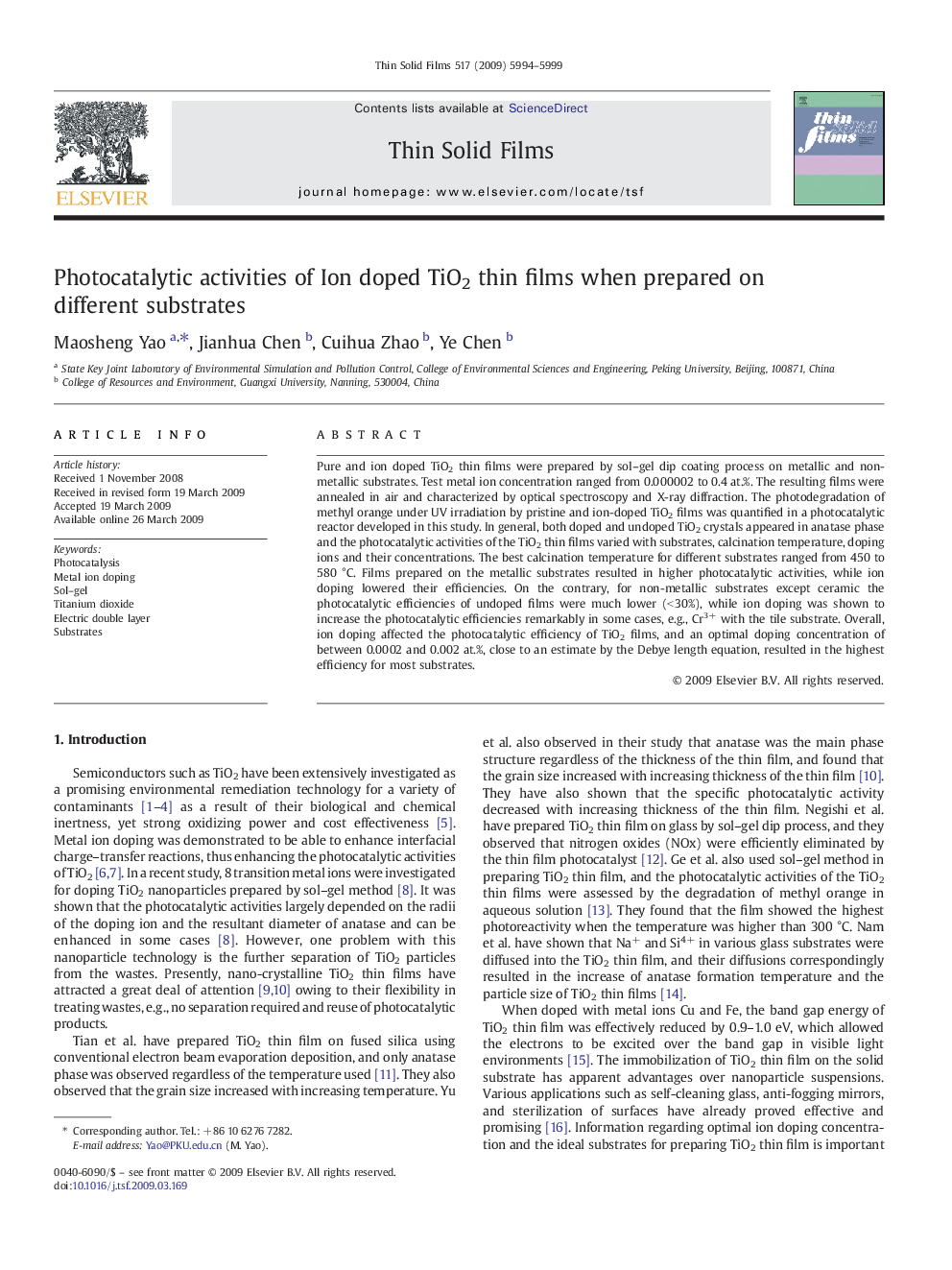| Article ID | Journal | Published Year | Pages | File Type |
|---|---|---|---|---|
| 1672547 | Thin Solid Films | 2009 | 6 Pages |
Pure and ion doped TiO2 thin films were prepared by sol–gel dip coating process on metallic and non-metallic substrates. Test metal ion concentration ranged from 0.000002 to 0.4 at.%. The resulting films were annealed in air and characterized by optical spectroscopy and X-ray diffraction. The photodegradation of methyl orange under UV irradiation by pristine and ion-doped TiO2 films was quantified in a photocatalytic reactor developed in this study. In general, both doped and undoped TiO2 crystals appeared in anatase phase and the photocatalytic activities of the TiO2 thin films varied with substrates, calcination temperature, doping ions and their concentrations. The best calcination temperature for different substrates ranged from 450 to 580 °C. Films prepared on the metallic substrates resulted in higher photocatalytic activities, while ion doping lowered their efficiencies. On the contrary, for non-metallic substrates except ceramic the photocatalytic efficiencies of undoped films were much lower (< 30%), while ion doping was shown to increase the photocatalytic efficiencies remarkably in some cases, e.g., Cr3+ with the tile substrate. Overall, ion doping affected the photocatalytic efficiency of TiO2 films, and an optimal doping concentration of between 0.0002 and 0.002 at.%, close to an estimate by the Debye length equation, resulted in the highest efficiency for most substrates.
